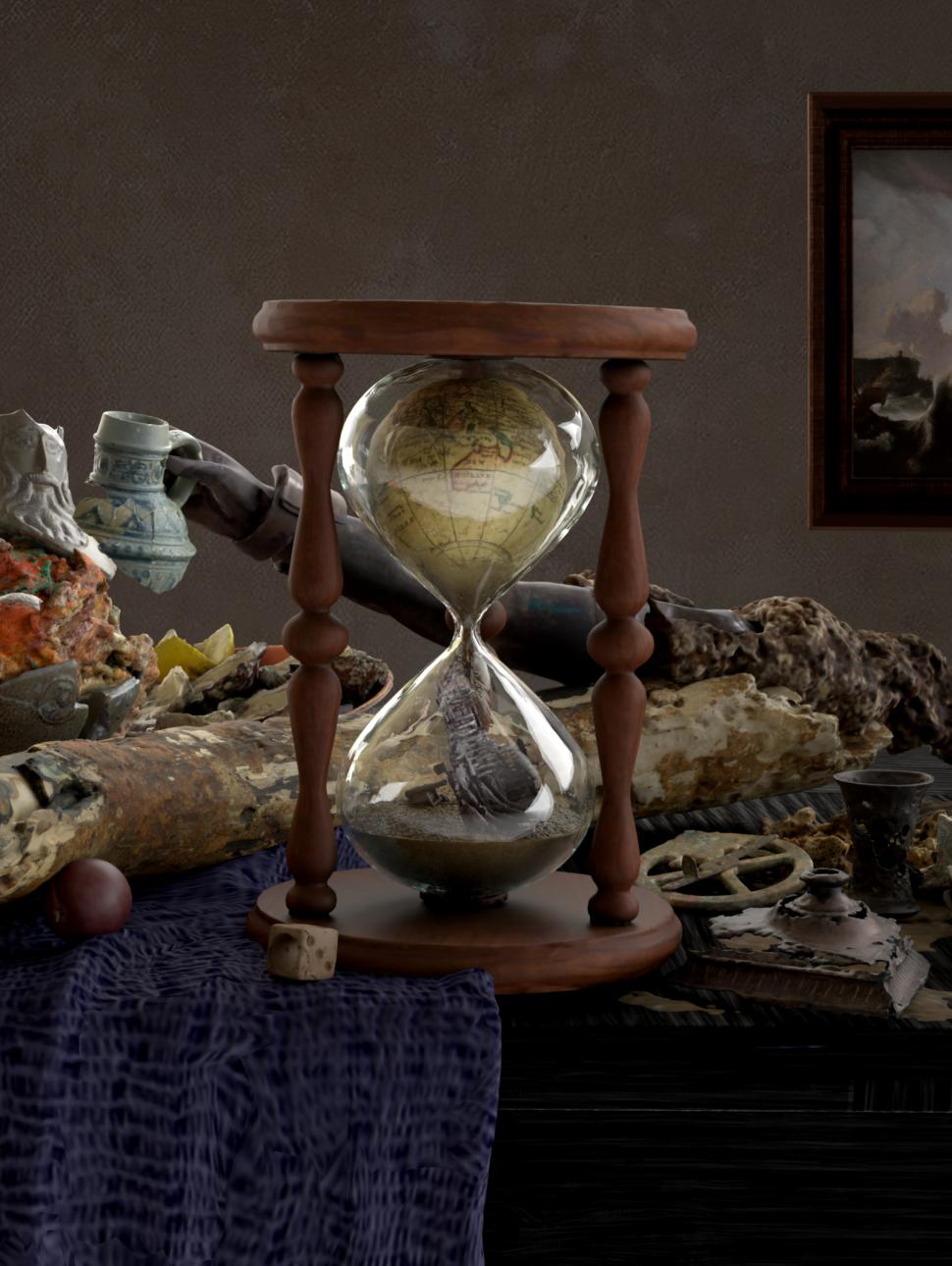
Artist Talk: First Encounters
Dates
30 November 2025 | 11am and 1pm
Free | Registrations required
Duration
1 hour
Site access information
WA Shipwrecks Museum is fully accessible. Call 1300 134 081 for assistance. More about accessibility and amenities >
Hear from the artists about their work on special exhibition First Encounters: Artist Interventions with the VOC Shipwrecks
We are delighted to bring the artists together for a unique discussion about their work in response to the Dutch East India Company (VOC) archives from the 16th and 17th centuries.
These archives feature an extraordinary array of artefacts, from the commanding hull of the 1629 shipwreck of the infamous Batavia that dominates the main gallery at WA Shipwrecks Museum, to intimate everyday objects like pottery sherds and clay pipes. Each artefact embodies the complex legacy of Dutch colonial expansion – objects of everyday use that became witnesses to shipwreck, survival, massacre and cultural encounter.
Enrich your experience further by visiting the First Encounters: Artist Interventions with the VOC Shipwrecks exhibition before or after the talk.
Image: Beatrice Glow, 2025, Textures of Time Study #13, Rendering of VR-sculpted 3D models captured in a virtual environment

About the Artists
Yindjibarndi artist Katie West draws attention to the constructs of race within the VOC archive by cataloguing the envisionings and depictions of Aboriginal and Torres Strait Islander peoples in so-called ‘New Holland’. These images, extracted from maps or written texts, are traced by hand, then translated into prints on fabric panels. These panels enlarge the archive, producing a bodily encounter with this racialised material, creating spaces for reflection around the apparatus of race and its utility within imperialism and settler colonisation.
Canadian-Indonesian artist Diyan Achjadi creates interventions with key foundation stones recovered from the Batavia wreck, originally intended for the gate of the castle of Dutch Batavia (current day Jakarta). Diyan’s work interrogates the nature of power wielded by colonial authority and examines the devastating cost of the Dutch presence to the land and waters of present-day Indonesia. They are creating a series of folded paper drawings that interweave past, present, and future stories of Jakarta, inviting reflection on the immense human and ecological cost of the spice trade that lingers to this day.
American artist Beatrice Glow, who has Taiwanese heritage, is recognised as a multidisciplinary artist whose work brings visibility to untold stories often overshadowed by the forces of colonialism, migration and inequality. Her practice encompasses sculptural interventions into museum spaces, participatory performances, experimental technology collaborations, and immersive olfactory experiences that prompt reflection on the visual and material languages of luxury, power, and colonialism. Inspired by underwater concretions of salvaged objects from the Batavia Shipwreck, her new video Textures of Time (working title) explores how time, power, and value sediment across centuries.
Australian artist Paul Uhlmann is captivated by the Baroque handwritten journal of Francesco Pelsaert, which recounts the harrowing story of the 1629 Batavia shipwreck. Uhlmann explores the paradox within the elaborate script, which conveys both the beauty and horror of the shipwreck and mutiny as well as the awe and complexity of first contact with Australia – its peoples, and its unique flora and fauna. Uhlmann draws inspiration from Dutch 16th century vanitas paintings which often brought together a confluence of insects, skulls and diverse flowers from across the globe. These Dutch works are highly layered which convey messages of colonial power whilst also acknowledging that all life is fleeting. Uhlmann’s artists book makes direct reference to the skeletal remains of a Dutch victim from the Batavia shipwreck which have been on open display at Shipwrecks for many years. The artist also draws into view the shared environment of the skeletal remains; the shallow watery grave occupied by plants, insects and birds to create works of impermanence and immanence.
About the Curators
Head of Department of Maritime Heritage at the Western Australian Museum, Dr Corioli Souter’s research focuses on maritime archaeology, particularly the interpretation of underwater cultural heritage and historical shipwrecks in Western Australia and the Indian Ocean region. A key aim for Dr Souter is to make these heritage sites and related museum collections accessible to researchers and the public. She played a key curatorial role in the development of WA Museum Boola Bardip, the Western Australian Museum’s landmark redevelopment, helping shape its conceptual and thematic frameworks and curating major content - including intervention methods to amplify histories that have long been overlooked. She is a lead Partner Investigator on the Australian Research Council Mobilising VOC Collections Project.
Arvi Wattel is a lecturer in Art History at the School of Design at the University of Western Australia (UWA) and Chief Investigator and UWA node leader for the Australian Research Council Linkage project Mobilising Dutch East India Company Collections for new global stories. His research explores cultural encounters, miscommunication, and visual representation from Renaissance Italy to Dutch colonial expansion. Recently completed projects include "Visualising Batavia Silverware," an international collaboration with fellow curator, Dr Corioli Souter and the WA Museum, University of Amsterdam, and the Rijksmuseum that produced digital visualisations, museum displays, and scholarly publications examining VOC trade objects intended for Mughal, India. His current research investigates the visual representation of Australia in the 17th and 18th centuries, examining how limited knowledge and cultural assumptions shaped early depictions of the continent.
Related exhibitions
Uncover untold stories of the Dutch East India Company through art and archives.
